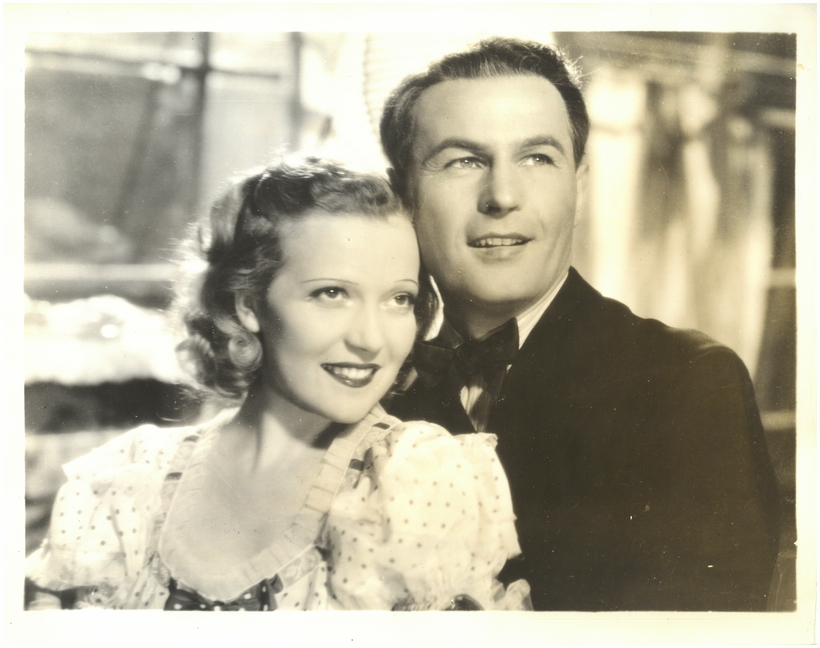He, a tenor, was a baker’s son from a Polish mining town. She, a coloratura soprano, hailed from glittering Budapest. His stock-in-trade was grand opera. She specialized in the light variety. Box-office darlings both, Jan Kiepura and Marta Eggerth met on a German soundstage as co-stars in the musical My Heart Calls You (1934) and married two years later.
By 1938, war was in the air. More prescient than some, Jan and Marta set sail for America. Would the New World be their oyster? Maybe not quite. It helped that Kiepura disembarked in New York with a Metropolitan Opera contract in hand. Eggerth, though still in her 20s and with siren leads in 30 European hit movies to her credit, had a harder time finding her footing. Eventually, she landed in Hollywood, where she was wasted (twice) as a second banana to Judy Garland, then on the cusp of adult stardom.

The couple fared better as free agents. No vehicle showed them to more glamorous advantage than The Merry Widow, seen on Broadway with choreography by George Balanchine, then across the United States, in London, and in Berlin for a total of 2,000-plus performances in five languages (no match for Yul Brynner’s 4,265 in The King and I or Carol Channing’s 5,000-plus Dollys, but hey). For a lavish New York encore, they premiered Polonaise, heading a company of 125. Despite melodies lifted from Chopin, and Kiepura’s electric presence as the Polish freedom fighter General Tadeusz Kosciuszko (as in the bridge), the run petered out after a mere 113 performances. Fast forward to 1956, when Kiepura and Eggerth sold out London’s 5,200-seat Royal Albert Hall twice in a single week.
His stock-in-trade was grand opera. She specialized in the light variety.
Kiepura’s untimely death in 1966, at age 64, brought the star-kissed partnership to a close. After a silence of several years, Eggerth made a multimedia comeback in television, concerts, master classes, and musicals. In Pittsburgh, a 1983 revival of Stephen Sondheim’s Follies can have left not a hair’s breadth of daylight between Eggerth and the fictitious Heidi Schiller, diva of yesteryear, for whom (Heidi keeps saying) Franz Lehár once wrote a waltz—“or was it Oscar Straus?”
Eggerth’s Indian summer lingered long. Into her 90s she reigned supreme at Café Sabarsky, in Manhattan’s Neue Galerie, where she reminisced, tossed her boa, and sang hits from her glory years in tones that though frail remained steady, sweet, musical, and in tune. She gave her last performance at the age of 99.
“As breezy a star as ever twinkled in an operatic sky,” the Post’s critic had reckoned after Kiepura’s triumphant 1938 Met debut as Rodolfo in La Bohème, “personable in dress and figure, [his] voice tinged with the colors of his personality.” That’s praise too long for an epitaph. But when death claimed Eggerth four months shy of her 102nd birthday, The New York Times ran her obituary under the lapidary sobriquet, “The Callas of operetta.” What, I remember asking her after she reached the century mark, accounted for her longevity? She answered that she never drank, smoked, or partied past her bedtime.
The exhibition “‘My Song for You: Marta Eggerth and Jan Kiepura Between Two Worlds,” on at Vienna’s University of Music and Performing Arts, showcases the artists among such compatriots and contemporaries as Erich Korngold, Lotte Lehmann, Artur Rubinstein, and Billy Wilder. Movies, recordings, photographs, and personal papers are on display, along with samples of the picture-perfect costumes they wore, freshly starched for the occasion. This isn’t so much biopic as epic in its own right, a light-opera War and Peace.
Matthew Gurewitsch writes about opera and classical music for AIR MAIL. He lives in Hawaii.

